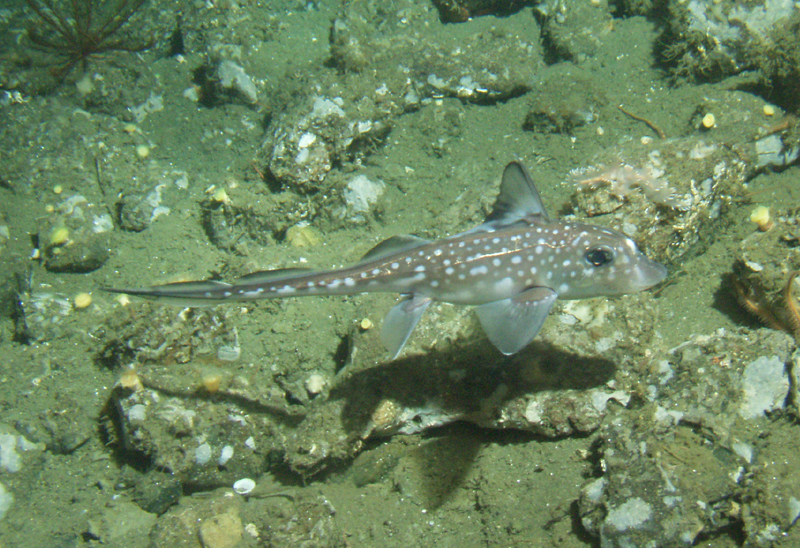Mysterious shark cousins
Interview with
Chimaeras are little known relatives of sharks that get up to some odd things in the deep sea.
 Find out more:
Find out more:
EDGE- Evolutionary Distinct & Globally Endangered, ZSL
Matt- My name is Matt Gollock. I am the assistant manager of the international marine and freshwater conservation programme at the Zoological Society of London. And the chimaeras are probably what I would describe as the forgotten cousin of the shark and ray.
We know very, very little about chimaeras in comparison to both the sharks and rays.
Chimaeras are very odd looking creatures. And chimaera in Greek mythology actually means a creature that's created from other bits of animals, which when you look at a chimaera you can actually sort of believe that.
And, while chimaera is a sort of a group term for these fish, within that there's individual species that are known as rabbit fish, rat fish, elephant fish. So there's a range of different names for different chimaera species.
The thing we can generally say about chimaeras is they mainly live at depth, so anything down to about 2500 m.
As I mentioned they're related to the sharks and rays and all three of these different groups of animals, the sharks, rays, and chimaeras, have skeletons that are made of cartilage rather than bone.
如果我的描述是一个普通的妖怪ra, I'd probably first say there's no such thing as an average chimaera, but when you get to the head end that's where it kind of gets really interesting because they often, sharks, rays, and chimaeras, all use electrosense to detect their prey. And the chimaeras have some very unusual modifications of their snout to aid this. Some of them have very, very long paddle shaped ones.
This fact just, I still sort of have trouble imagining the mechanics of this but the males actually have a retractable sex organ on their head. And they have traditional sex organs as well, but they seem to have this other one as well. And to my knowledge I don't know if anyone's actually seen it in use, but it is something that sort of slightly boggles my mind.
I guess, my interest as part of the Zoological Society of London is obviously around conservation. And this is what the Edge Sharks project is gearing up to address. And as I mentioned before we know very little about chimaera. Any species that we don't know much about is potentially vulnerable to man's activities in the oceans.
If we don't know how what we're doing is affecting fish, it's going to be quite difficult to protect them. SO in reality a lot of basic conservation action in relation to chimaeras might be simply in relation to gathering more information on their behaviour and their distribution.
- PreviousChristmas tree worms
- NextSea Angels
 Find out more:
Find out more:








Comments
Add a comment